The green KNX bus cable has become a symbolic element in home and building automation over the last 31 years. This bus signal transmission device, which has become an iconic component thanks to the dedicated work of tens of thousands of system integrators, is undoubtedly the primary transmission medium in the portfolios of many KNX manufacturers. If we look at the major market trends, it is a fact that wireless communication has been in our lives for a long time: smartphones, laptops, cameras, TVs, speakers. They are all designed for easy deployment. Fewer cables means fewer problems, at least in theory. So why is it different in this market?
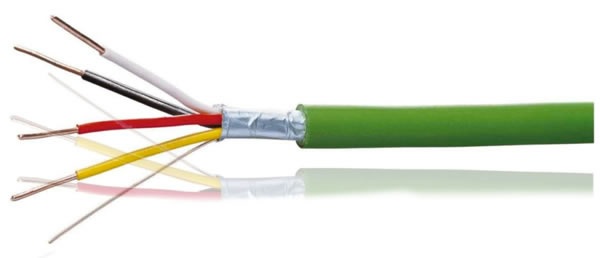
The green KNX bus twisted pair cable - the backbone of thousands of KNX systems worldwide.
Recovering
Az egyik ok, amiért a KNX Partnerek a dedikált és kézzelfogható kábeleket részesítenek előnyben, hogy megbízható és professzionális megoldásnak tekintik azt. Másrészt a KNX TP eszközök jóval nagyobb választékban voltak elérhetőek a rendszerintegrátor számára, mint a KNX RF eszközök. De a vezeték nélküli iparban olyan új szelek fújnak, amelyek lehetőséget kínálnak a KNX projektek spektrumának bővítésére: a KNX RF már itt van, a gyártók és rendszerintegrátorok erőfeszítésének és az elkészült specifikációknak, eszközöknek és termékeknek köszönhetően.
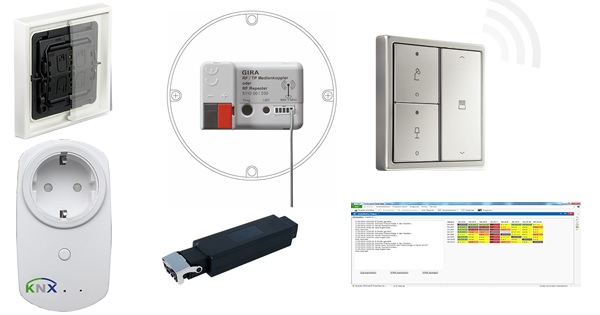
Some examples of KNX RF products already available:
From left to right: ZF Friedrichshafen AG self-powered KNX RF switch, Gira KNX RF/TP media coupler, Jung KNX RF F40 wall transmitter; (below) MDT RF + radio socket/switch actuator, Elsner KNX RF-MSG-ST motor control unit and Tapko Technologies KNX RF field strength analyser.
Great opportunities
From a business perspective and taking into account the macro-economic factors in our market, there is great potential in the retrofitting of houses and buildings. In such cases, wireless technologies are the most preferred choice, as they are simpler to install, cheaper and do not require chiselling.
The use of wireless technologies can be an important consideration for large projects. For example, it has been crucial in the roll-out of a nationwide smart meter in France, in the large-scale Linky project. These smart meters can be installed using KNX RF. Indeed, France's path to 95% deployment of digital meters by 2020 relied on KNX RF. Smart meters are able to communicate with existing applications in the house, such as fittings, lighting, engineering, etc. It would be hard to imagine a project of this size designed with wired communication!
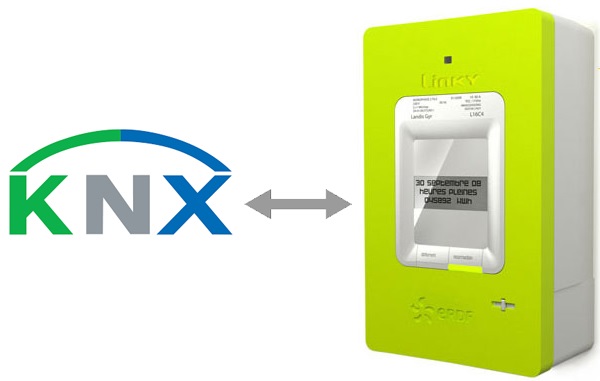
The Linky smart meter from French utility company Enedis (formerly ERDF) supports KNX wireless communication and has been installed in more than 13 million homes by 2018.
Finally, there is the need, more than ever, to link mass products/technologies and smart homes and buildings.
Why choose KNX RF?
Now that we have clarified why it is time to think about wireless communication for smart homes and buildings, the question arises: why is KNX RF the right choice? This streamlined wireless technology is designed to deliver the best performance in smart homes and buildings thanks to its 868MHz frequency band. This frequency allows perfect wave propagation in indoor spaces, so there is less need for a signal amplifier. And the installed repeaters include algorithms that help avoid unnecessary repeats.
Thanks to ETS, the KNX programming software, installation is really simple and seamless. This is key, as the same tool can be used to configure a complete system that includes a twisted pair (TP), radio frequency (RF), power line (PL) and internet protocol (IP).
ETS software
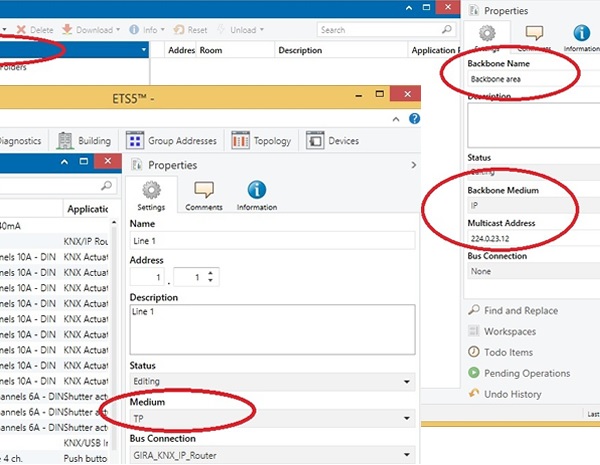
Az ETS szoftver egy teljes telepítést konfigurálhat, beleértve a TP, RF, PL és IP eszközöket.
The KNX RF devices can be configured directly via USB-RF dongle or via TP/RF media interface. Companies can focus on product development and work with a growing portfolio of standard system components in a market that can now rely on the expertise of system integrators and the tools to work with the products - a fact that is highly appreciated by R&D departments.
There are two different types of KNX RF in terms of available radio channels, namely Ready and Multi. While KNX RF Ready uses a single channel, KNX RF Multi can operate on five different channels, increasing the protection against interference. Of the five channels, three are fast and two are slow - a perfect combination to increase transmission efficiency depending on the device requirements. For example, temperature sensors only require slow channels to send ambient temperature values.
KNX RF supports both battery and battery-less devices. The KNX RF protocol is also suitable for devices such as push buttons or temperature sensors that collect kinetic, vibration energy or are solar powered. They generate the energy they need to operate themselves. In addition, KNX RF can be combined with KNX Secure. This technology provides data protection by encrypting KNX IP telegrams and data and protects user data from unauthorised access (ISO 18033-3, AES 128 CCM encryption).
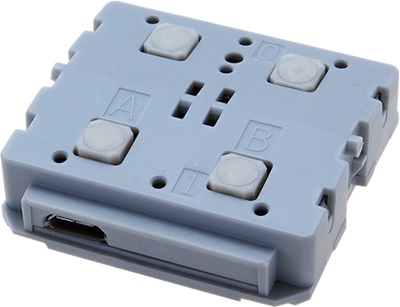
The Weinzierl KNX RF 440 Secure RF push-button insert with battery offers KNX Data Security. It is suitable for a wide range of switches available on the market and the built-in Micro-USB port allows wired configuration of the device. The device can also be configured wirelessly using ETS5.
Summary
2018 has been a breakthrough year for KNX RF technology: KNX manufacturers have expanded their portfolio, enabling the design of complete systems using only KNX RF products, including shutter controls, switches and dimmers, pushbuttons, capacitive sensors, presence detectors, window opening sensors, sockets, binary inputs, remote controls, energy harvesting pushbuttons and KNX Secure devices. This trend is growing and the maturity of the technology, all the possibilities for large scale projects, means a bright future for KNX RF in smart homes and buildings.
There are great opportunities ahead if we continue in this direction. It is undoubtedly time to rely on the KNX RF waves as much as on the KNX green bus!

Jesus Arias
KNX Association
2008.09.07
